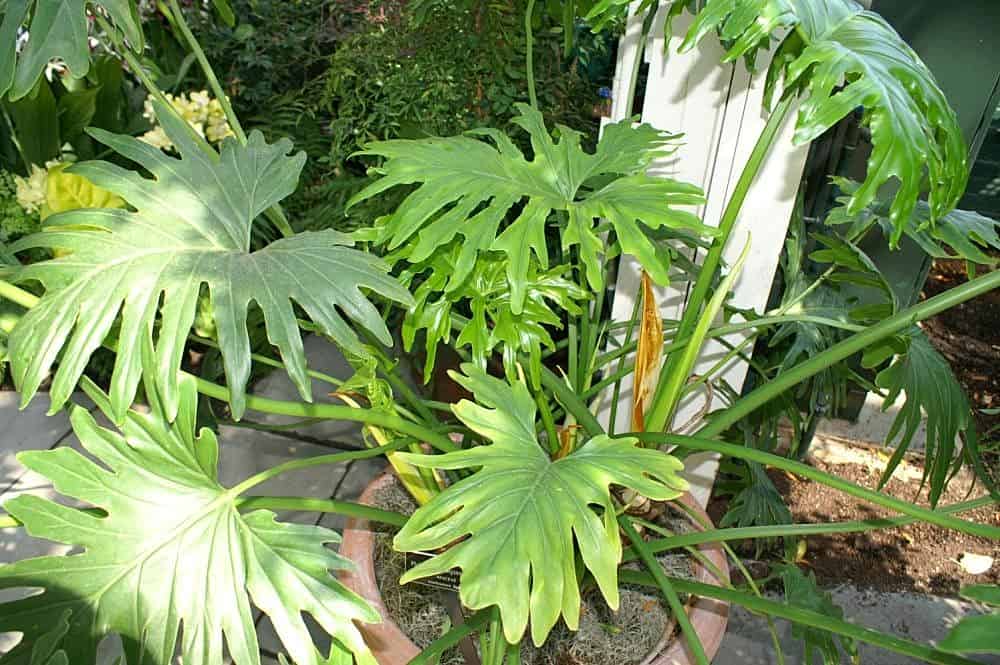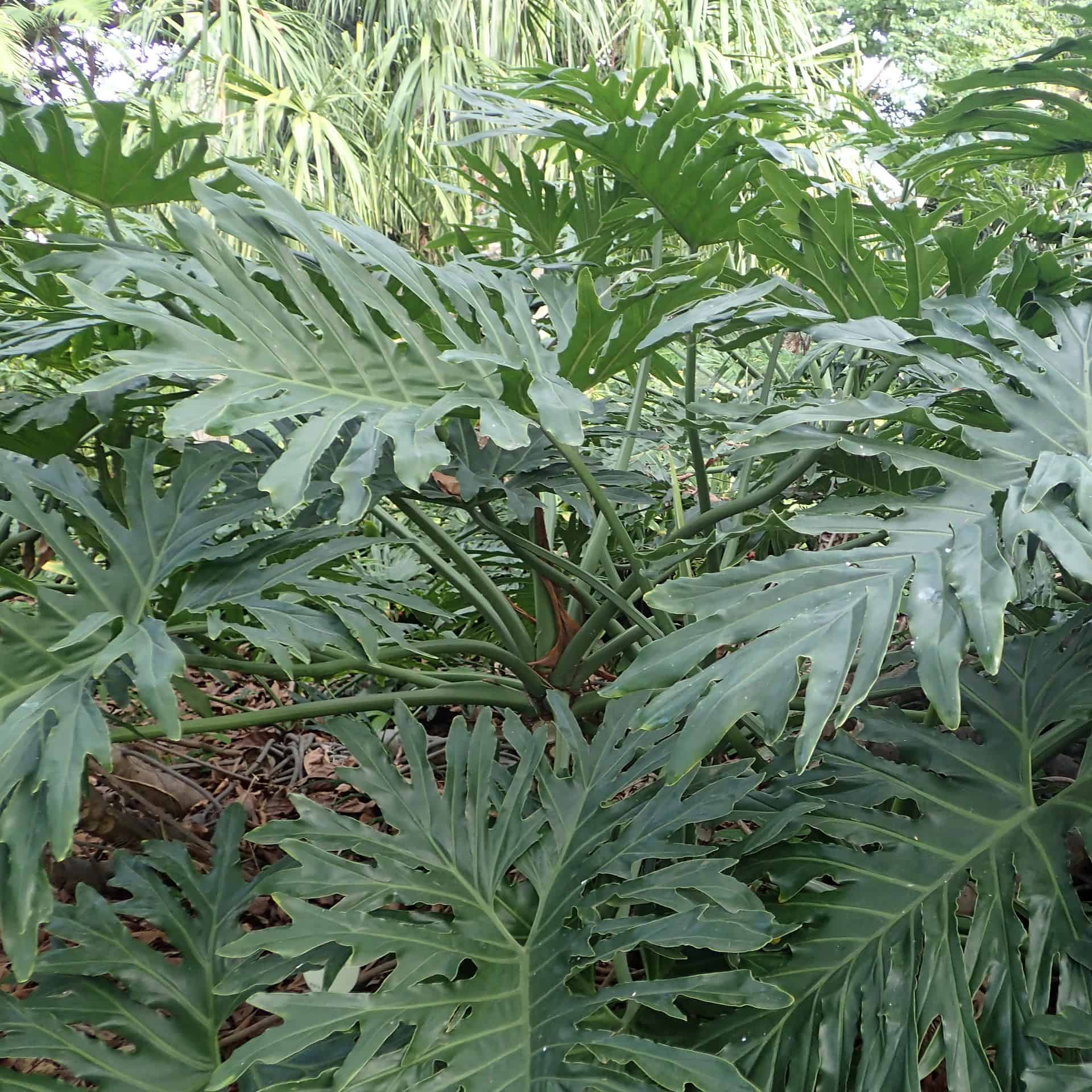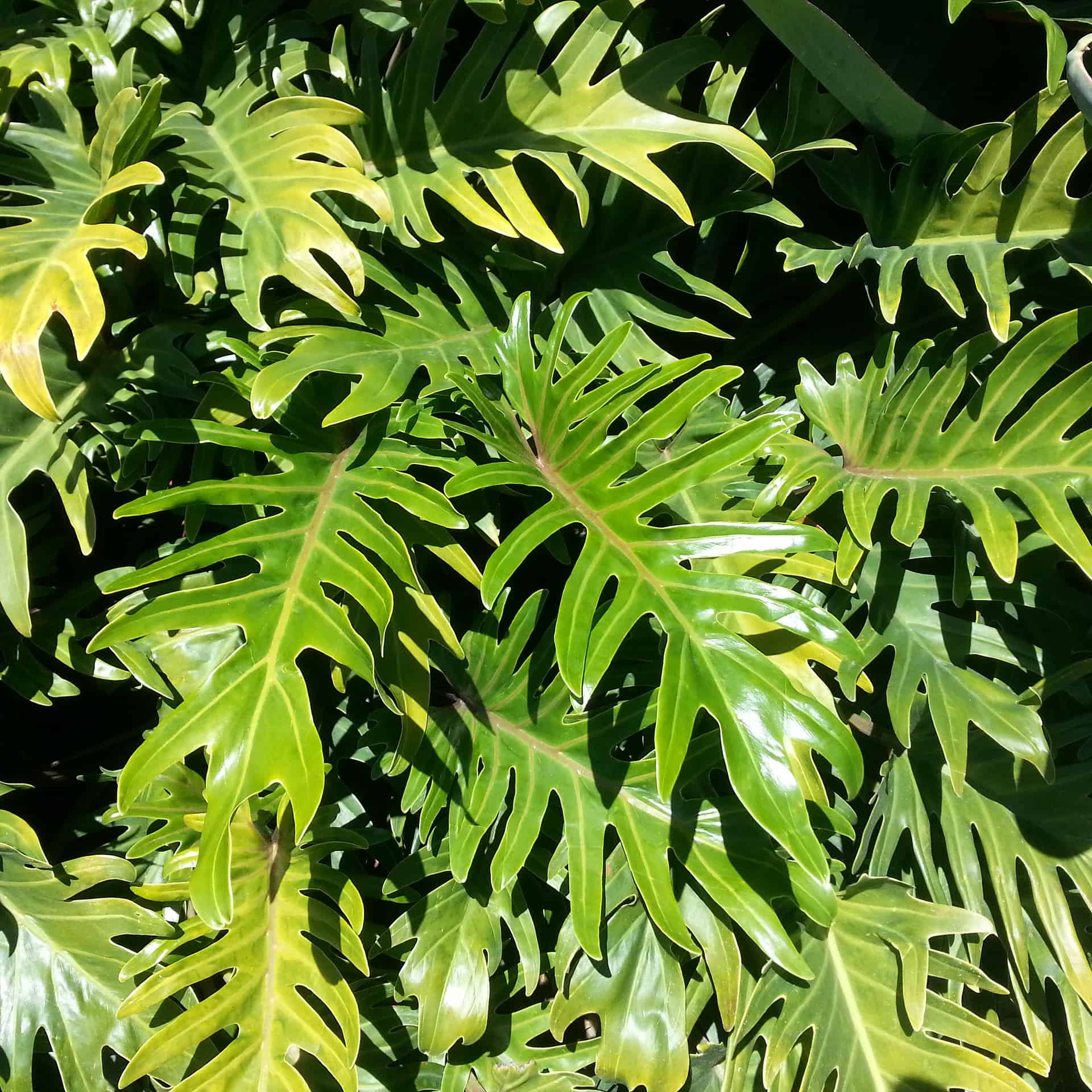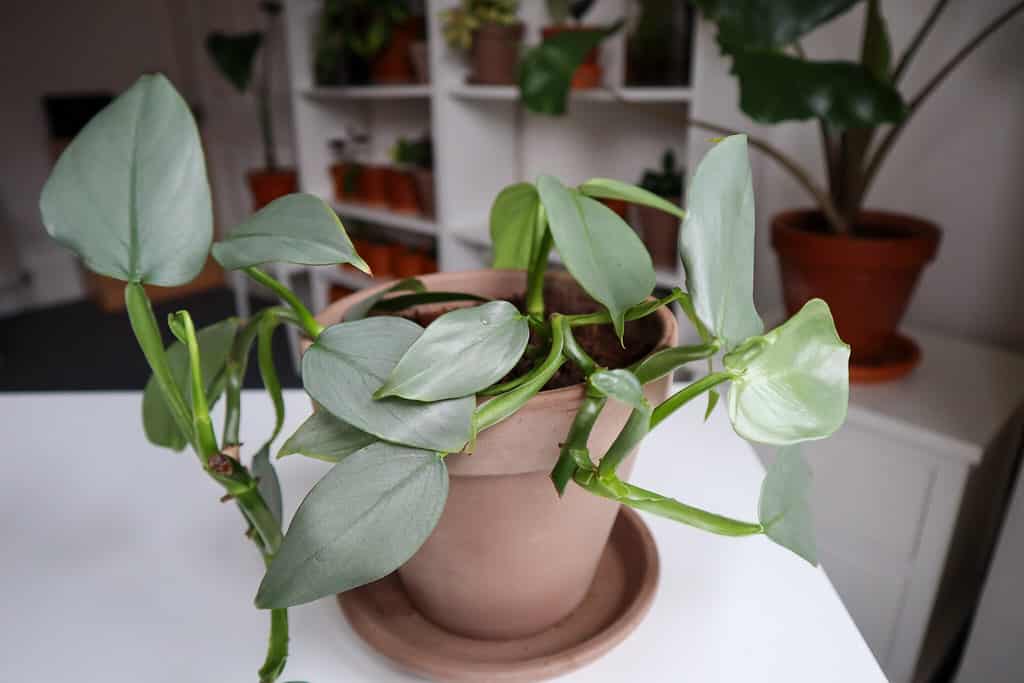No products in the cart.
Do you want a plant to fill up your space? Then you will love this tropical plant we have here. The Philodendron bipinnatifidum is a plant that will complete your huge corner to add color to your living space.
While it is not a very popular houseplant, it still deserves a spot in any home for its vivid green leaves. Another notable thing is when grown indoors; the needs differ from other Philodendrons.
Plant Name: Philodendron bipinnatifidum
Common Name: Philodendron selloum, Tree Philodendron, Lacy Tree Philodendron
Plant Type: Tropical Tree
Native Areas: South America
Light Requirement: Bright Indirect Light
Watering: Water when the topsoil dry
Fertilizer: Balanced Feed
Toxicity: Toxic to Humans and Pets
Temperature: 65 to 80ºF (18 to 27ºC)
Propagation: Cuttings
Growth: 6 feet tall
Soil Type: Loamy Soil Barely Moist
USDA Hardiness Zones: 9b, 10a, 10b, 11a, 11b
More About The Tree Philodendron
Compared to the other tropical plants in the Araceae family, the Philodendron bipinnatifidum is a tree with lobed leaves but is a vining plant. It can grow aerial roots as it climbs with vigorous growth.
You cannot find the Philodendron selloum for sale, often making it a rare plant to find. The tree philodendron is native to South America in tropical regions on the East and Gulf Coasts. Compared to other Philos, they do not grow in the dense rainforest canopy.
In the Philodendron genus, the foliage looks similar to that of the Split Leaf Philodendron. The tree philodendron grows showy and wide as a potted plant with deeply lobed leaves. In addition, the plant grows trunks that split and spread out.
Mature plants can take up to 20 years to grow up to 15 feet tall, but indoors you can expect them to reach six feet tall. Even the deeply lobed leaves cover a large area. While it can flower, it rarely does indoors.
Hence, the beautiful vivid green leaves are the main attraction. Still, the horsehead philodendron, another common name, is not made to stand on a table. Another notable thing is that the plant is unsafe around children or pets.
All parts of the Philodendron bipinnatifidum contain calcium oxalate crystals that can irritate the stomach when ingested.
Lacy Tree Philodendron Care Guide
When you bring your new plants home, it helps to provide them with the right care. Here we have gathered some information to help for the healthy growth of your tree philodendron.
The Best Aerated Soil
The Philodendron selloum has different soil requirements than other tropical plants. First, they need well-draining soil and some organic matter to help them tolerate acidic or salty soil. We recommend using the following:
One part compost to make the soil more alkaline
One part perlite and gravel for drainage to aeration
One part coco coir or orchid bark
We do not recommend using peat as it will add acid, and also avoid using a grower’s mix as it might have too much salt present.
If you need to remedy salt content, ensure your pot has enough drainage holes to wash out the excess salts. For a bit more alkaline, add some crushed seashells or wood ash.
Lighting Needs For Philodendron Bipinnatifidum

Philodendron selloum prefers direct sunlight to full shade and will fit perfectly at your south window.
While the extraordinary tropical plant can adapt to shade, the leaf stems and leaves will turn darker green.
Lower light will lead to stunted growth and not flower or display those beautiful vivid green leaves.
Another notable thing is to turn your plant so all sides can get the direct sun to avoid oddly shaped trunks.
Watering to Prevent Soggy Soil and Root Rot
The Philodendron selloum prefers when you keep the soil moist than leaving it to dry between watering. But keep it barely wet but not soggy.
The best way to water is to allow the water to drain through the drainage hole at the bottom and water when the top soil is dry.
Doing this helps prevent overwatering resulting in root rot, and is difficult to deal with in this plant’s root system.
Temperature and Humidity

The ideal temperature for your Philo is 60°F to 75°F (16°C to 24°C.) The best rule to follow is if you are not getting cold, the same applies to your plant. Another important thing for your Philodendron selloum is humidity, particularly showy leaves.
It is a tree with thinner-lobed leaves that needs moisture to prevent crispy foliage. We recommend aiming for 70% to 80% humidity. You can use a pebble tray with water or a humidifier.
Fertilizing Philodendron Bipinnatifidum
By now, you know that your tropical plant does not tolerate salty soil. One of the biggest culprits creating salt buildups is fertilizer.
Too much fertilizer can result in fertilizer burn, and best to use organic feed with fewer salts. You can fertilize your Philodendron bipinnatifidum once a month in spring and summer.
If you use a chemical fertilizer initially, we recommend diluting it to half-strength. Then, choose a fertilizer made for your exotic plants.
Another option is adding a fish emulsion, compost, or worm casting to the soil.
Potting Tree Philodendron
The Philodendron selloum will need repotting every two years. You can repot when you notice the roots poking out of the drainage holes.
The best time to do this is in the spring and summer, as your plant is healthy and can get accustomed to the new home before winter arrives.
Likewise, do not choose a container size that is too big, as too much soil leads to overwatering and root rot.
Propagating The Philodendron Selloum
The best way to propagate your Philo is through stem cuttings, and best to wait for the stems to develop those gorgeous Philodendron leaves to cut a piece off. Choose a mature plant and follow the provided steps below:
Take a sterile knife and choose a healthy stem to remove.
Cut below a leaf node and remove the bottom leaves leaving the remaining top leaves in place.
Dip the cut end into a rooting hormone and place it in a small pot of fresh soil. Moisten the soil but not soggy.
Enclose the container with a clear plastic bag to help retain moisture.
When the roots develop a couple of inches, you can remove the bag and care for it as usual. Ensure that your plant gets enough bright indirect sunlight to grow.
Split Leaf Philodendron Winter Care
If you place your young plants outdoors in the garden, we recommend bringing them inside when the temperatures drop. You can expect the Philodendron selloum to die back for garden-grown plants, but it will grow back in the growing season.
Similar Plants
In the Philo genus, you can find several cultivars to grow indoors, filling up your living space with color.
Xanadu Philodendron

The other name for this Philo is P. Winterbourne, with compact growth but tall. It has the same dissected lobed leaves as the Philodendron selloum.
White Knight Philodendron
The White Knight is a rare plant with white splotches on the foliage, and it has purple-cream colored stems. It is a climbing variety that needs trimming to control the height.
Philodendron Silver Sword
 philodendron silver sword @danjones (June 29, 2021 )
philodendron silver sword @danjones (June 29, 2021 )
The plant has sword-type leaves that change from blue-gray to gray-green as it matures. It is a climbing vine you can pinch back to control the height.
Common Diseases and Pests
As with most plants, they are susceptible to pests and diseases. So here are some unwelcomed guests you may find on your plant at home. We recommend treating your plants with Neem oil as it is non-toxic and will do wonders for your plants.
Aphids
These insects make your plant turn yellow and wilt. You can spot them on the undersides of leaves at the nodes. These pests feed in large numbers, and you should isolate your plant away from your other indoor plants. Then hose your plant to see if it helps to remove the insects. Alternatively, treat your plant with insecticidal soap.
Mealybugs
These white fluffy bugs remove all the nutrients from your plant and are spotted early enough to remove them with alcohol and a Q-tip. Or use insecticidal soap for larger infestations.
Scale
The bug is tricky to remove as they are covered with a hard shell. A sign that this pest is present is wilted yellow leaves. So, you will have to dislodge them from the plant using your fingernails. Then throw them into some alcohol to kill them.
Frequently Asked Questions
Yellow leaves can result from a pest infestation like aphids, spider mites, mealybugs, and scale. We recommend keeping an eye on your plant for any of these insects.
No, it is best not to mist the leaves as it can result in diseases like powdery mildew. Instead, you can invest in a humidifier or use a pebble tray to improve the air moisture around your plant.
The Philodendron selloum is not a complex plant to care for. All it needs is bright indirect light with ample drainage to thrive.
You can find the Philodendron selloum at different tropical nurseries online and at Plantly. So you need not look far and can have your plants delivered to your door.
Whether you want to buy, sell, or simply reach out to other plant enthusiasts, Plantly is the right place to be!


